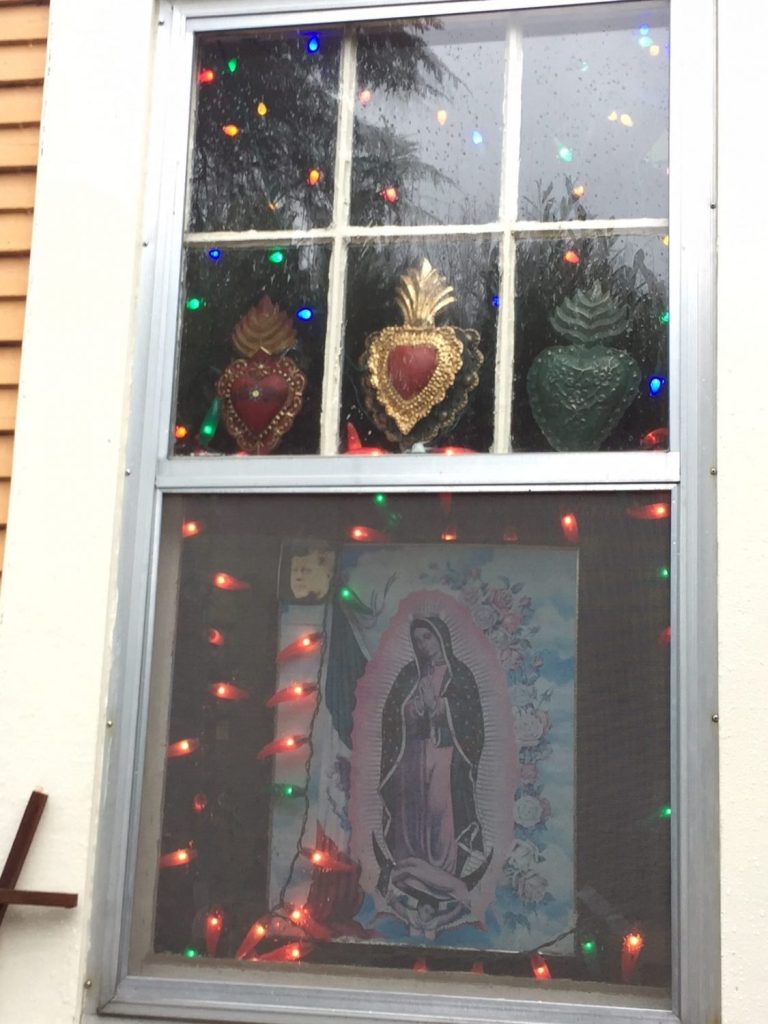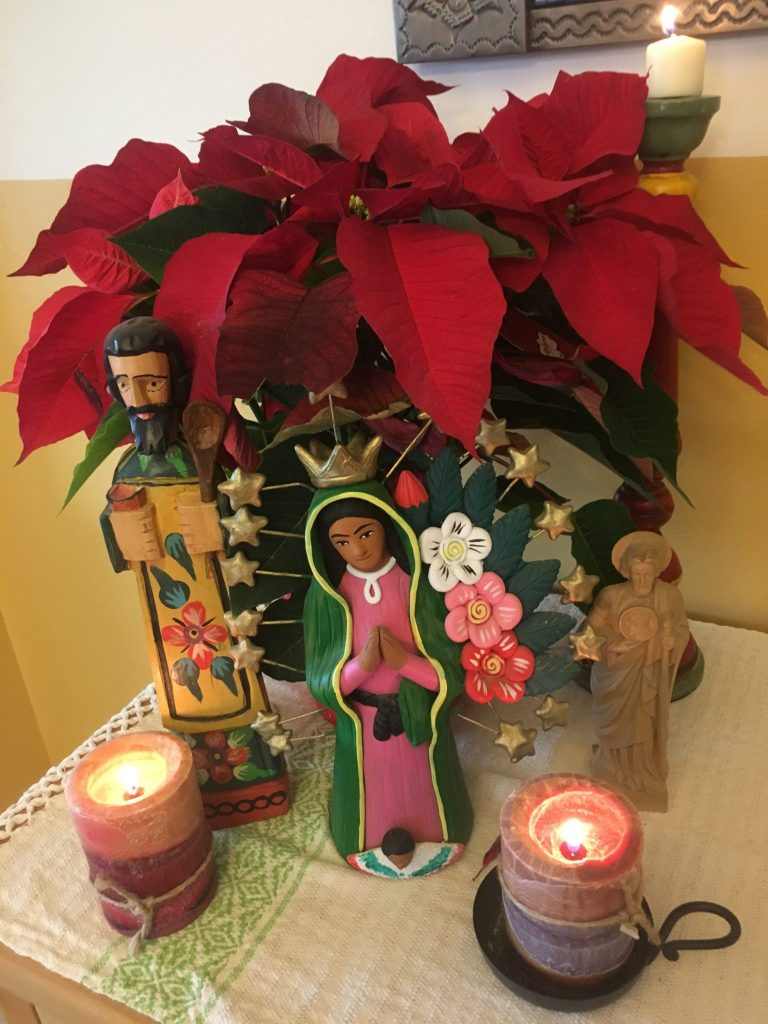Respectful, Role Model, Mentor, Loving Friend, Confidante, Amorosa, Responsible, Sabia, Second Mother, Supportive, Atenta, Loves-You-No-Matter- What, Good Listener, Patient, Cariñosa, Loving.
These are some of the words that the women in our groups in Albuquerque came up with when I said, “Tell me what you think of when I say, Madrina.”

Most Latinas Get a Madrina Shortly after Birth
Your first Madrina was likely the woman that stood next to your mom at your baptism. She vowed that if something happened to your mother, she would take care of you. Your madrina can also be the woman that sponsored your confirmation, first communion, quinceañera, and/or was your Maid of Honor at your wedding.
The concept of Madrina (and Padrino) comes from our Spanish Catholic roots and it goes way back to the early middle ages. However, even those of us who don’t practice Catholicism anymore, keep our Madrinas and Comadres. That’s because they make our lives richer and offer us love, wisdom, guidance and much needed support.
Do you have a Madrina? I hope you do! I have an 85 year old Madrina thriving in New York City, but I had several Madrinas growing up. I wrote a whole book about it. It’s called, what else but, Las Madrinas: Life Among My Mothers (Tres Chicas Press).
So, I hope you are lucky enough to have a Madrina in your life, but if you don’t, how do you get one? I want to have a conversation about this because it is a tradition that we as Latinas need to keep alive. How do we do that? How do we keep this relationship alive for our daughters and granddaughters?
Your Inner Madrina
Another idea that I want to explore with you is the concept of the Inner Madrina. We hear and read a lot about Inner Wisdom these days. Trusting yourself. Intuition. Higher Power. There are many words to describe this act of reaching inside yourself for wisdom. But what about fostering a relationship with your Inner Madrina?
Natalie Goldberg, a well-known writer and writing guide from Taos, New Mexico, writes about the “Sweetheart,” that can help you write. As writers, we have very active and sometimes mean inner critics that tell us that our writing sucks. And Goldberg has conjured up an inner sweetheart that will counter the inner critic. When the inner critic tells the writer that she’s dumb and a bad writer, the sweetheart says, “Keep going, you’re doing fine.” That inner sweetheart, from my point of view, is an Inner Madrina.
Robin Scritchfield, author of Body Kindness talks about having an “Inner Caregiver” that you could develop inside yourself to give you guidance and to show yourself kindness. My aha moment as I was reading her wonderful book came when I realized that she too was talking about an Inner Madrina.
Call her your Fairy Godmother, Your Guide, Your Sweetheart, Inner Caregiver or Blessed Mother, but you too can have an Inner Madrina!

At De Las Mías, we affirm our culture and our power as Latinas. We uphold these relationships that still thrive in our familias and comunidades. We hold up our community of hermanas, comadres and madrinas to help us live healthier, more supported lives. We have several experts on our team to serve you and we refer to them respectfully as Madrinas. Madrina Malena is our expert nutritionist; Madrina Lori is the test kitchen chef, Madrina Yoli has given us great guidance on how to be more physically active.
But what about an Inner Madrina? And wouldn’t it be fabulous to conjure one up for yourself?
So, in this new year, we want to invite you to explore the concept of the Inner Madrina with us. Look back to the words that our comadres in Albuquerque used to describe Madrina and ponder a while on those qualities: Wise, Respectful, Role Model, Mentor, Loving Friend, Confidante, that Sabia, Second Mother, Amorosa, Supportive, Atenta, Loves You No Matter What, Good Listener, Patient, Cariñosa.
If you had an Inner Madrina, what would she be like? What quality would she represent?
Here are some questions to get you started, but don’t stop there:
- What’s your Inner Madrina’s name?
- How would she help you counter the negative messages you give yourself?
- What words would she use to comfort you?
- How would she guide you take better care of yourself?
- How would she greet you in the morning?
- What kind words might she say to you right before you go to sleep?
Send me your Inner Madrina Story! It doesn’t have to be long or fancy; just a personal telling of your experience. Use the prompts I provided or make up your own. The first 10 Cuenteras who send me your Inner Madrina Story will get a complimentary copy of my memoir, Las Madrinas: Life Among My Mothers.
Email Ana at ana@delasmias.com













